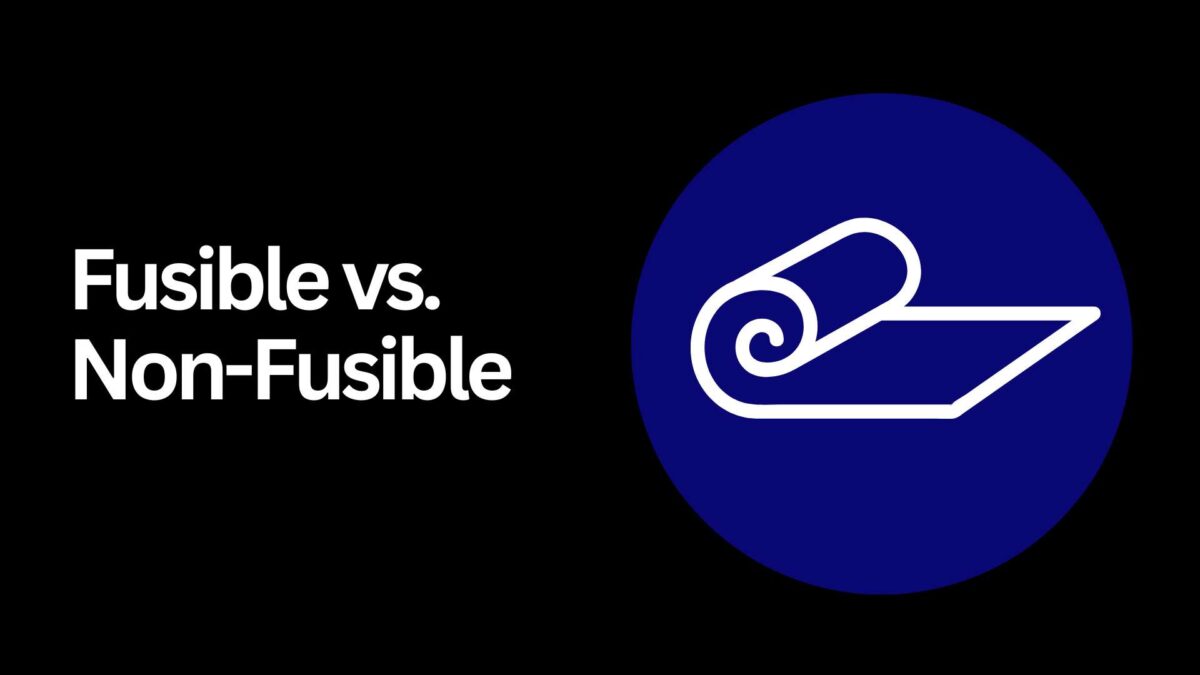Selecting the Appropriate Interlining: Fusible vs. Non-Fusible
Introduction
In garment construction, interlining plays a vital role in achieving a professional aesthetic and enhancing garment functionality. This hidden layer, positioned between the primary fabric and lining, provides essential structure, stability, and a smoother finish. However, the application method differentiates two principal interlining types: fusible and non-fusible.
Table of Contents
Fusible Interlining
Differences Between
Fusible and Non-Fusible Interlining
Selecting the Optimal Interlining
Conclusion
Fusible Interlining
Fusible interlining offers a time-saving and efficient solution. Featuring a heat-activated adhesive backing, it readily bonds to fabric upon application of pressure with an iron at the manufacturer’s recommended temperature settings. This eliminates the need for stitching, streamlining the interlining application process.
Advantages of Fusible Interlining
- Effortless Application: Fusible interlining eliminates the requirement for needle and thread, making it ideal for projects requiring speed or where intricate stitching techniques are not desired.
- Durable Bond: When applied correctly, the heat-activated adhesive creates a strong, long-lasting connection that withstands washing and wear. Studies published in the Journal of Textile Science and Apparel Technology [1] support this claim, demonstrating the stability of properly fused interlining even after multiple laundering cycles.
Applications for Fusible Interlining
- Crisp Collars and Cuffs: Fusible interlining excels at creating sharp, defined edges for collars and cuffs, contributing to a professional aesthetic.
- Structured Waistbands: Waistbands that maintain their shape and provide a flattering silhouette benefit significantly from the use of fusible interlining.
- Defined Pockets: Structured and well-defined pockets become achievable with the ease and efficiency of fusible interlining application.
Non-Fusible Interlining
While not boasting the heat-activated convenience of its counterpart, non-fusible interlining offers distinct advantages. This type requires stitching to secure it to the fabric, allowing for greater control over placement and intricate shaping, particularly on curved seams.
Benefits of Non-Fusible Interlining
- Adaptability: Non-fusible interlining comes in a broader range of weights and materials, catering to a wider variety of project requirements.
- Reusability: Unlike its fused counterpart, non-fusible interlining can be unstitched and reused on another project if necessary, minimizing waste.
- Heat-Sensitive Fabrics: For delicate fabrics that might be damaged by heat, non-fusible interlining offers a safe alternative to the fusing process.
When Non-Fusible Interlining Takes Center Stage
- Curved Seams: Stitching non-fusible interlining allows for precise application and smooth results on curved seams.
- Knit Fabrics: The flexibility of non-fusible interlining works well with knit fabrics, providing essential structure without compromising their inherent drape.
- Heavy Fabrics: For thicker fabrics requiring heavyweight interlining, stitching offers a more secure bond compared to the adhesive properties of fusible options.

Selecting the Optimal Interlining
The optimal interlining choice hinges on the specific project and fabric characteristics. Here’s a breakdown of key considerations:
- Fabric Type: Is the fabric heat-sensitive? Does it require intricate shaping techniques? These factors will influence your selection.
- Garment Style: A structured jacket might necessitate a different interlining type compared to a flowy dress.
- Desired Outcome: Do you prioritize a fast and easy application or require more control over placement for intricate details?
| Feature | Fusible Interlining | Non-Fusible Interlining |
|---|---|---|
| Application | Ironing | Stitching |
| Ease of Use | Easier | More Skill Required |
| Durability | Durable | Durable (if stitched well) |
| Suitability for Fabrics | Limited (avoid heat-sensitive fabrics) | More versatile |
Pre-Application Testing
Before committing to large-scale application, always test a scrap of interlining on your fabric. This allows you to assess the adhesion (for fusible options), drape, and overall compatibility with your chosen materials.
Conclusion
Understanding the distinct characteristics of fusible and non-fusible interlining empowers you to make informed decisions for your sewing projects. By carefully considering the application method, fabric type, and desired outcome, you can select the interlining that elevates your creations to a professional standard.
Link of related Articles

Shweta, a textile designer with a keen eye and deep knowledge of fabrics, translates her passion into unique designs. She loves to share her expertise and ignite a love for textiles in others. Dive into the world of fabrics with Shweta!


